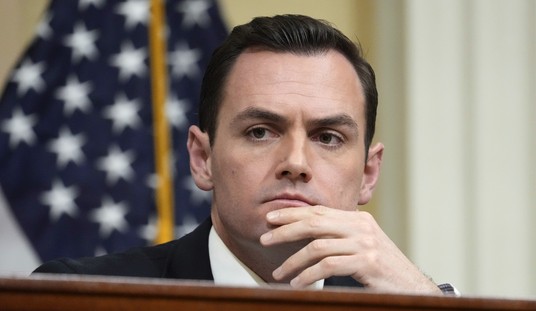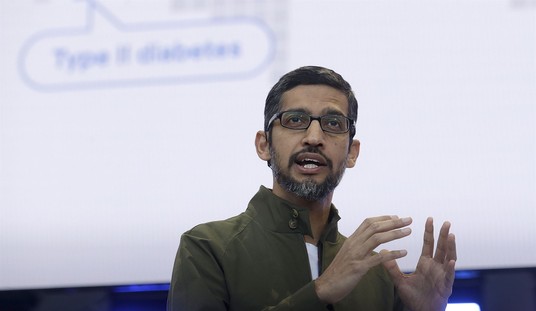Earlier this week, the National Transportation Safety Board (NTSB) urged all states to ban cell-phone use while driving, including the use of “hands free” cell phone systems, even those that operate through the dashboard of the car itself. They based this recommendation — unanimously agreed by the NTSB’s board members — on one fatal accident in Missouri a year ago:
The recommendation, unanimously agreed to by the five-member board, applies to both hands-free and hand-held phones and significantly exceeds any existing state laws restricting texting and cellphone use behind the wheel.
The board made the recommendation in connection with a deadly highway pileup in Missouri last year. The board said the initial collision in the accident near Gray Summit, Mo., was caused by the inattention of a 19 year-old-pickup driver who sent or received 11 texts in the 11 minutes immediately before the crash.
The pickup, traveling at 55 mph, collided into the back of a tractor truck that had slowed for highway construction. The pickup was rear-ended by a school bus that overrode the smaller vehicle. A second school bus rammed into the back of the first bus.
The pickup driver and a 15-year-old student on one of the school buses were killed. Thirty-eight other people were injured in the Aug. 5, 2010, accident near Gray Summit, Mo.
Their conclusion?
It’s not possible to know from cell phone records if the driver was typing, reaching for the phone or reading a text at the time of the crash, but it’s clear he was manually, cognitively and visually distracted, she said.
So even though no one could tell whether the driver was even looking at his phone before the accident, the NTSB is insisting that all cell phone use, including hands-free calling, get banned, even though phone calls had nothing to do with the accident at all. Why ban phone calls if the NTSB blames texting for the accident? Well, as it turns out, texting while driving was already illegal in these circumstances:
Missouri had a law banning drivers under 21 years old from texting while driving at the time of the crash, but wasn’t aggressively enforcing the ban, board member Robert Sumwalt said.
“Without the enforcement, the laws don’t mean a whole lot,” he said.
Er, okay. In other words, since the law banned the specific act in question didn’t prevent the accident, we should ban even more activities in the hope that will prevent this from happening again? What’s the logic in play here — that an unenforced ban needs another ban to activate Wonder Twin Powers and actually be effective, even if it doesn’t actually relate to the cause of the crash that prompts the recommendation?
Besides, as Glenn Reynolds writes at Popular Mechanics, there were more factors in play than just the texting:
First, the Missouri crash was largely caused by more mundane safety issues that the NTSB seems to have deliberately downplayed. For all the discussion of the dangers of texting and driving, the NTSB report contains this rather significant finding: “Had the driver of the following school bus maintained the recommended minimum distance from the lead school bus, she would have been able to avoid the accident.”
That’s right: Don’t follow too closely, just like they teach you in driver’s ed. And why did the first school bus rear-end the pickup? According to the NTSB, that was “the result of the bus driver’s inattention to the forward roadway, due to excessive focus on a motorcoach parked on the shoulder of the road.”
So, despite the focus on texting as a cause of this particular accident, and on this accident as purported evidence that drivers should be banned from using portable devices, NTSB’s own report shows that the drivers involved in this scary wreck were involved because of driver inattention having nothing to do with cellphones, texting, or any other personal electronic devices. It was just the old-fashioned kind of driver inattention that has caused most accidents since the beginning of the automobile age, and that could have been prevented by a little attention to proper following distance and the road ahead.
Look at the sequence of the accident again. Most school buses have the driver riding much higher than other drivers on the road for the purpose of giving them a longer look at the dangers ahead. The first bus driver, at least, should have been following at a distance where a sudden crash ahead could be avoided, and if the driver ahead of the bus was following the next vehicle too closely, then the bus driver should have slowed down and let more distance separate between the pickup and the bus. That’s apart from the issue between the two school buses.
The NTSB sounds as if they’re just recommending the bans on activity not connected to this accident as a means of banning all “distractions” in vehicles. Well, good luck with that. Responsible driving is all about managing distractions — other cars, road work, bad weather being significantly among them. While they’re at it, the NTSB might want to take a look at banning some other distractions to driving, too:
- Screaming children
- Back-seat drivers
- Car radios
- High-beam headlights
- Pedestrians
- Subwoofers
- (Actually, I’ll put subwoofers twice, since I hate those things)
- Make-up
- Food
- Newspapers
- Necking … and worse
Some of this falls under laws against careless or reckless driving already, of course, which are reasonable rules that actually penalize drivers who don’t properly manage or reduce their distractions. Calling for bans of hands-free cell phone use (to which several states restrict cell use by drivers already) based on one accident that had nothing to do with making or taking calls on a cell phone are not just unsupportable, they make the situation worse by forcing police to attempt to enforce nearly impossible laws. How can a cop tell the difference between a hands-free phone call and someone singing along with the radio, or perhaps just talking to himself?
Besides, as one state discovered after passing the ban, they don’t help much anyway. A study of California’s hand-operated cell phone driving ban showed that it didn’t impact safety records at all:
We present evidence from observed accidents in California over a period in which the state implemented a law to ban hand-held cell phone use while driving a motor vehicle. In contrast to much of the previous research in this area, we treat the implementation of the policy as a quasi-natural experiment and draw on empirical data to determine whether mean daily accidents fell after California implemented the ban. To control for unobserved time-varying effects that could be correlated with the policy, we employ three regression discontinuity strategies: narrowing the time window of analysis, using a highly flexible global polynomial, and using a local linear regression design. The RD approach has advantages over previous empirical work on this topic, namely that we avoid using cross-sectional panel data that are likely susceptible to significant unobserved heterogeneity and omitted factors. We find no evidence of a state-wide decrease in accidents as a result of the ban. While our results are specific to California, cell phone bans in other jurisdictions that have similar enforcement and penalty parameters could be expected to have similar effects.
While this non-result may seem surprising to people accustomed to seeing drivers using cell phones doing careless or dangerous things on the highway, drivers were doing careless and dangerous things on highways long before the invention of the cell phone.
Indeed. The real danger on the highway is the careless driver, not the distractions that most drivers handle responsibly.








Join the conversation as a VIP Member